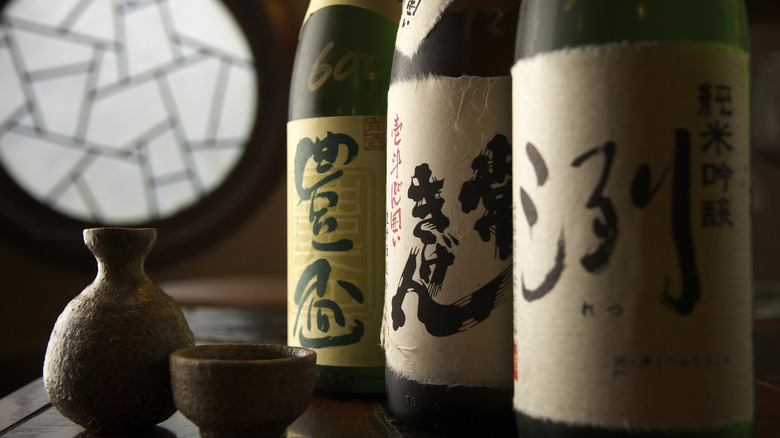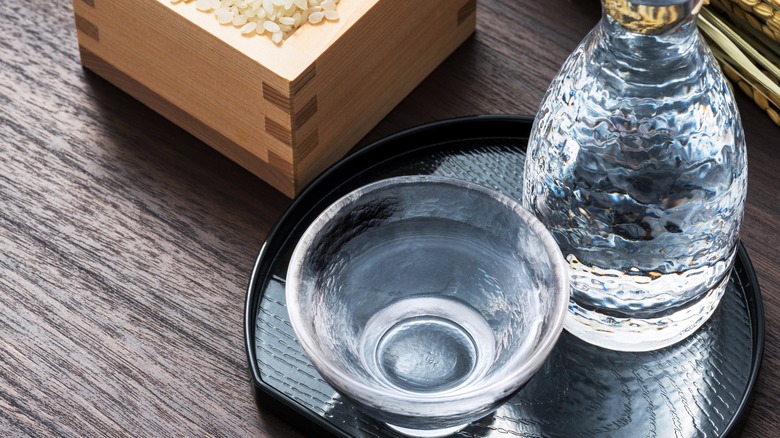Before Drinking Sake, Learn To Read The SMV Level
Sake is a versatile and delicious drink, but it's often misunderstood. It is not a wine as it is made from grain — in this case rice — instead of fruit juice. It is not a spirit since it's not distilled; it is, in fact, closer to a beer, but unique as a category on its own. It's not to be confused with rice wine, as the two are very different animals. Sake comes in different styles; some are dryer, some sweeter, and they can be filtered or unfiltered. But how can we tell the difference in taste? A good idea is to start by reading the SMV label, which stands by Sake Meter Value, known as Nihonshudo in Japanese. This is a scale used to determine the degree of dryness or sweetness of a sake by measuring the amount of residual sugar and alcohol it contains, therefore giving you an idea of its taste.
The SMV scale starts by giving water a score of zero, which is neutral, and then grading the sake with a positive value for dry, or a negative value for sweet. Therefore, a sake with a higher SMV will be drier, and as the amount of residual sugar increases, it's value will dip into the negative scale. Sake with higher residual sugar is also denser than dry sake.
Be aware, however, that SMV values are different from sake categories, which are determined by the degree of polishing of the rice grains used in brewing, and whether brewer's alcohol is added or not in the process.
How to pick the right sake for your taste
If you are a dry wine drinker, you might gravitate towards a sake with a higher SMV. A sweeter sake with a low SMV would be nice as an after dinner sip, or paired with a dessert. Aside from SMV, it's important to consider the level of acidity. A sake may have a low SMV, but a high acidity can minimize the sweetness your taste buds perceive in the sake, and one with a high SMV might seem sweeter if the acidity level is low. Therefore, learning to read the labels before you buy will be very useful in determining whether you will like the sake.
According to the experts, it's best to start with a well-balanced sake, and then experiment with drier and sweeter, depending on what you like best. A balanced sake with an SMV between -5 and +5 and an acidity of less than 2 is an ideal place to begin your sake adventure. These are a few suggestions for beginners to start experimenting with drinking sake — once you find the range of dryness or sweetness you prefer, you will be able to best pair it with food, or know which you prefer to drink on their own or even mix in cocktails.

